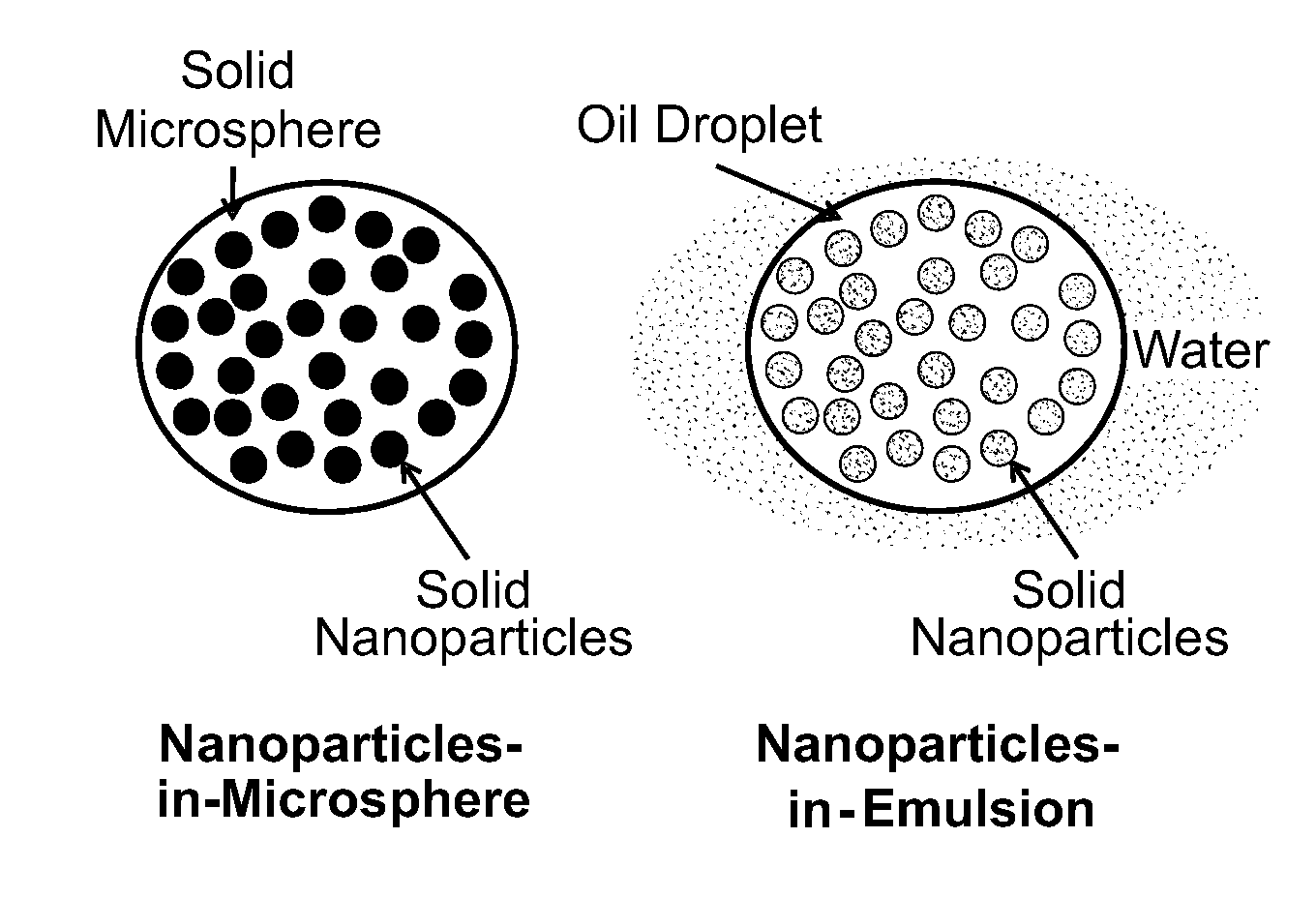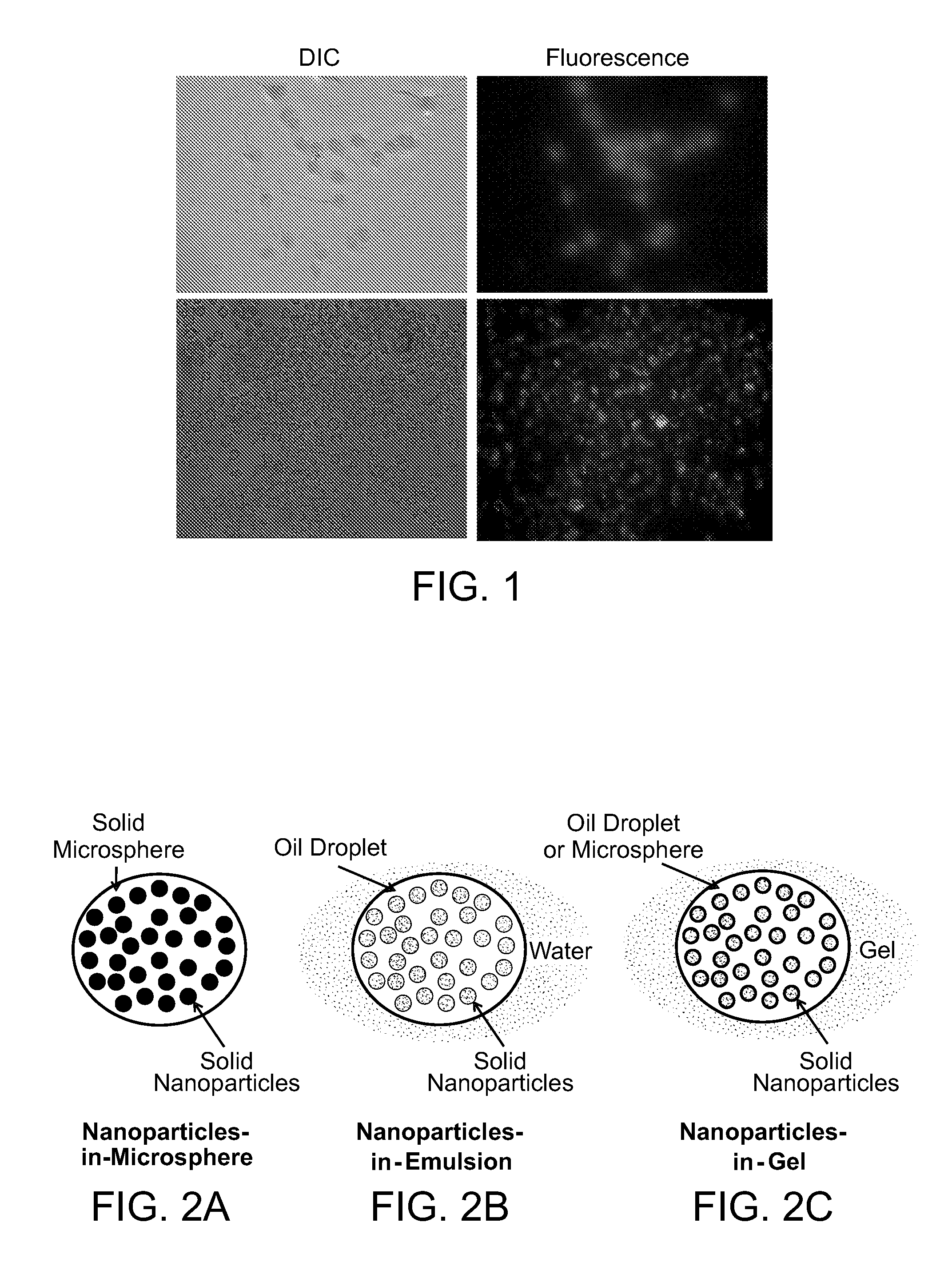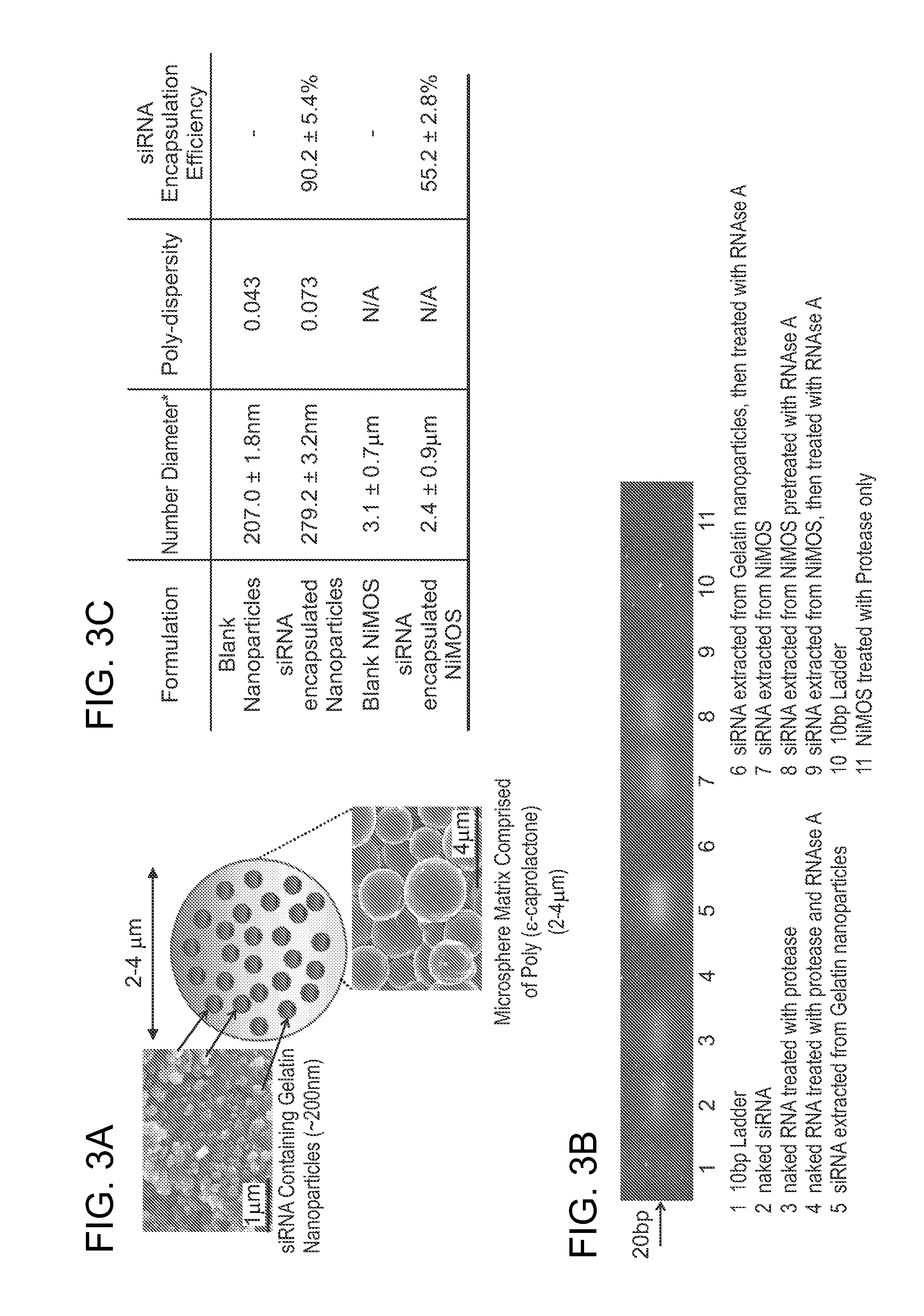Multi-compartmental macrophage delivery
a macrophage and multi-compartment technology, applied in the field of medicine, can solve the problems of increased nucleic acid protection from extracellular and intracellular barriers, chronic inflammation, and extensive tissue damag
- Summary
- Abstract
- Description
- Claims
- Application Information
AI Technical Summary
Benefits of technology
Problems solved by technology
Method used
Image
Examples
example 1
Formulation and Use of W / O / W Systems
[0133]W / O / W multiple emulsions are triphasic systems composed of three phases, inner aqueous droplets contained in oil globules surrounded by outer aqueous phase. The W / O / W multiple emulsion was formulated by a two step emulsification. Safflower oil (Jedwards, Inc., Quincy, Mass.), which is rich in omega-3 and omega-6 polyunsaturated fatty acids, was used for the oil phase of the emulsion. Safflower oil contains high levels of tocopherols, which are reported to have a negative effect on levels of pro-inflammatory cytokines tumor necrosis factor alpha and interleukin 1-beta. Tocopherols have shown to exert antioxidant activity and may provide protection against acute inflammation mediated by reactive oxygen species (10). The first step consisted of formulation of W / O primary emulsion using an oil soluble surfactant Span® 80. Naked plasmid (ME) or plasmid encapsulated in the gelatin nanoparticles (NiE) was incorporated in the aqueous phase of the pr...
example 2
Tuftsin-Modified Alginate Nanoparticles as a Non-Condensing Macrophage-Targeted Summary
[0136]Macrophage-targeted tuftsin-modified cross-linked alginate nanoparticles were developed for local and systemic anti-inflammatory gene therapy. Plasmid DNA expressing both enhanced green fluorescent protein (GFP) and interleukin-10 (IL-10) were physically encapsulated in the non-condensing alginate matrix. Alginate nanoparticles could efficiently encapsulate the plasmid and protect against DNAse degradation. Furthermore, the tuftsin-modified nanoparticles were efficiently internalized in J774A. 1 macrophage cells with saturation within 1 hour of incubation. Both quantitative and qualitative analysis of transgene expression with GFP-and IL-10-expressing plasmid DNA showed that the tuftsin-modified nanoparticles had significantly greater efficiency than any of the other systems, including scrambled peptide-modified nanoparticles and Lipofectin®, a cationic lipid-based transfection reagent.
[0137...
example 3
In Vitro Evaluations of Nanoparticles-in-Emulsion Formulations for Gene Delivery and Transfection in Macrophages
[0147]Summary
[0148]Gene delivery vehicles capable of transfecting into specific cells leading to sustained production of therapeutically active proteins can serve as a very effective strategy for disease treatment. In this study, solid nanoparticles-in-emulsion (NiE) formulations were developed and evaluated in vitro for gene delivery and transfection in adherent alveolar macrophages. A reporter plasmid expressing enhanced green fluorescent protein (EGFP-N1) was encapsulated in gelatin nanoparticles (GNP), which were further encapsulated in the inner aqueous phase of safflower oil-containing W / O / W multiple emulsions.
[0149]Results of this study show that NiE formulations were more efficient in transfection of EGFP-N1 in alveolar macrophages as compared to the control formulations such as DNA dissolved in the aqueous phase of the W / O / W multiple emulsion (ME), DNA encapsulate...
PUM
| Property | Measurement | Unit |
|---|---|---|
| Length | aaaaa | aaaaa |
| Length | aaaaa | aaaaa |
| Length | aaaaa | aaaaa |
Abstract
Description
Claims
Application Information
 Login to View More
Login to View More - R&D
- Intellectual Property
- Life Sciences
- Materials
- Tech Scout
- Unparalleled Data Quality
- Higher Quality Content
- 60% Fewer Hallucinations
Browse by: Latest US Patents, China's latest patents, Technical Efficacy Thesaurus, Application Domain, Technology Topic, Popular Technical Reports.
© 2025 PatSnap. All rights reserved.Legal|Privacy policy|Modern Slavery Act Transparency Statement|Sitemap|About US| Contact US: help@patsnap.com



